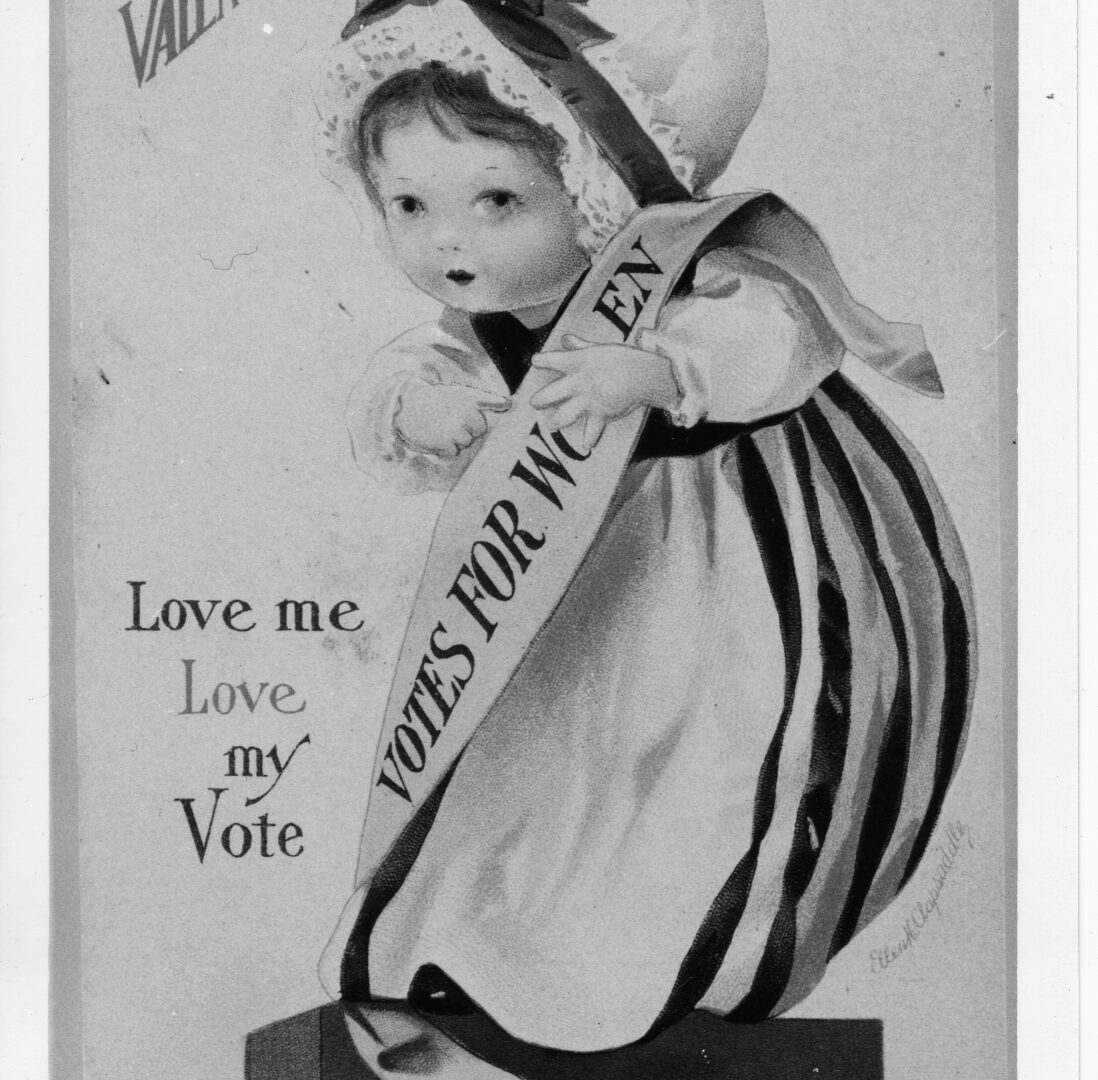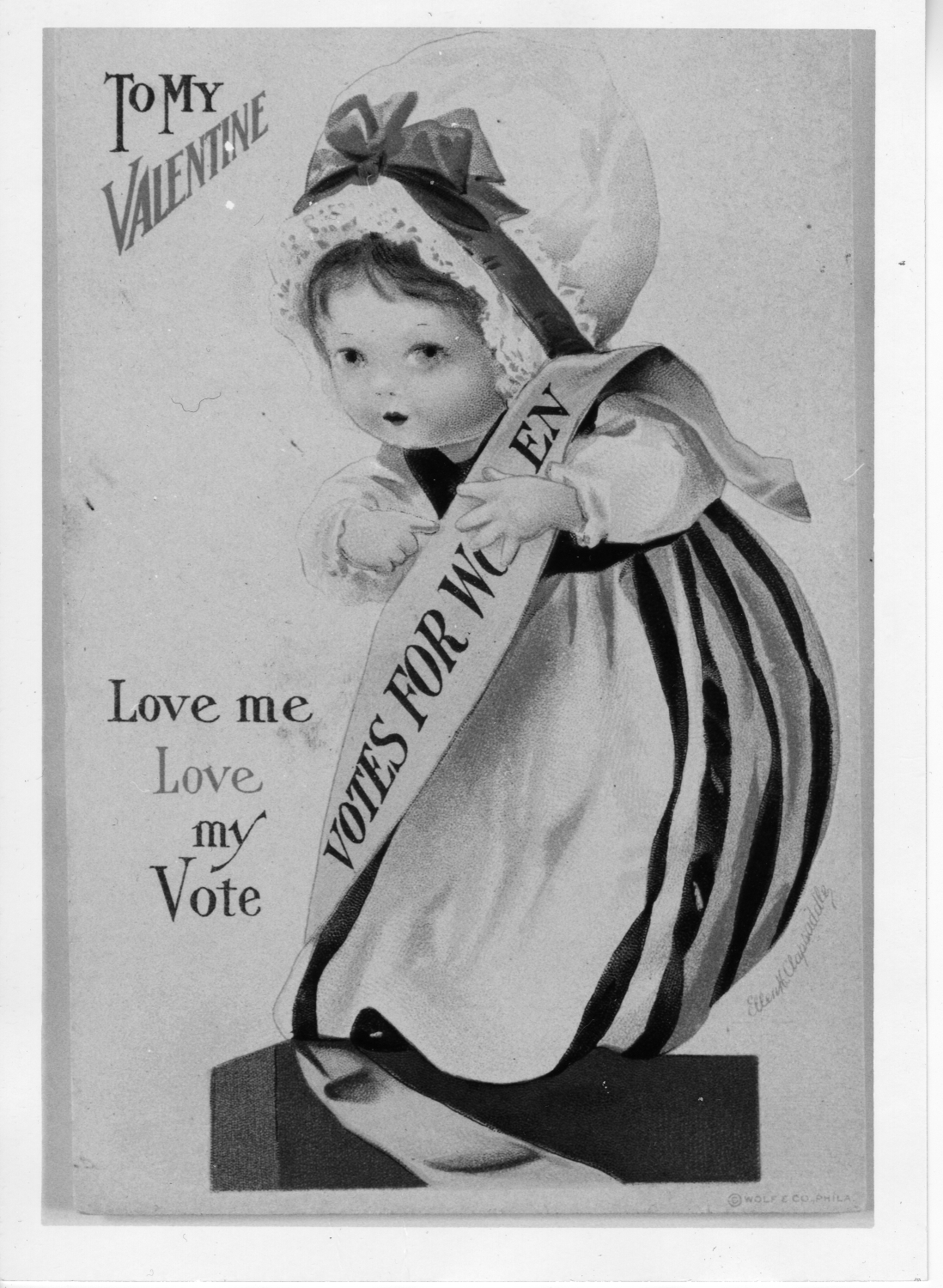“Love Me, Love My Vote”
Introduction
Before the United States became an independent state, only selected individuals in the colonies had the right to participate in the political process through voting. Historians estimate that around 10-20% of the population in the colonies could vote. After the United States gained independence, some states decided to expand voting rights but only in one state, New Jersey, could women, who owned significant property, vote. But even that changed. In 1807, New Jersey changed its laws and banned all women from voting. Across the United States, all women were excluded from what is today the most fundamental right of every U.S. citizen: voting.
In the 1800s and especially in the second half of the 19th century, many politically active women engaged in the fight for women’s right to vote. Those women were known as suffragists because they fought for equal suffrage, which is the right to vote in political elections. They created suffrage clubs and other organizations. They published newspapers, books, and pamphlets that promoted the message of suffrage. They organized marches, parades, and public lectures. They sent petitions to state and national legislatures demanding voting rights for women. All these efforts aimed to convince everyone in the society, from powerful politicians to ordinary Americans, that men and women were equal and therefore women should have had the same political rights as men.
In this activity, you will examine a popular holiday postcard that suffragists sent to promote the message of women’s voting rights. It is an example of one creative idea used to fight for the political equality of men and women.
Activity Questions
- What kind of postcard is this? What holiday does it celebrate?
- Describe this postcard.
- Do you know why the figure in the postcard is wearing a sash? If you are not sure, look up “women suffrage sash” and research the significance of sashes for the women’s suffrage movement.
- What kind of cards do we usually send for Valentine’s Day? Is this card a typical valentine? Or is it different from typical valentines that we can find in stores today?
- How do you understand the slogan on the card: “Love me, Love my Vote”? What kind of message does it send?
- Do you think that sending postcards is a good idea to promote an important political message?
- What kind of causes that promote equality and social justice are we fighting for or should we fight for today? Choose one cause that you find very important and design a card that you can send to others to promote your chosen cause.
Primary Sources
To learn more about the primary sources featured in the activities above, click the following links:
Arkansas Social Studies Standards
Social Studies, Grades K – 4
- Strand: Civics/Government
- Content Standard 2: Participation and Deliberation – Students will analyze civic rights, roles, and responsibilities.
- Grade 3 (Citizenship): C.2.3.3 Compare rights and responsibilities of citizens in different times and places
- Grade 4 (Citizenship): C.2.4.3 Evaluate changes in citizens’ rights and responsibilities over time
Social Studies, Grades 5 – 6
- Strand: Civics/Government Content Standard 2: Participation and Deliberation – Students will analyze civic rights, roles, and responsibilities.
- Grade 5 (Citizenship): C.2.5.1 Evaluate various ways of fostering citizenship and civic virtues
- Grade 5 (Citizenship): C.2.5.3 Analyze rights, responsibilities, and privileges of citizens and non-citizens in the United States
- Grade 6 (Citizenship): C.2.6.4 Examine civic virtues that guide government, society, and communities over time
Arkansas History, Grades 7 – 8
- Strand: History
- Content Standard 7: Students will examine the impact of historical events and people on the development of Arkansas
- H.7.AH.7-8.5 Discuss social, economic, and political reforms of the Progressive Era in Arkansas from multiple perspectives using a variety of sources
- H.7.AH.7-8.6 Investigate social, economic, and political effects of World War I and World War II on various segments of the population in Arkansas
- H.7.AH.7-8.9 Examine social and cultural transformations in Arkansas
Key Terms
Downloadable Guides and Handouts
We encourage K-12 educators to use History Alive: Virtually! in a way that will best match their classroom needs. The “Exercise” handout includes a complete exercise as featured on this website, the “Primary Sources” handout includes only primary sources used in the exercise, and the “Questions” handout includes analytical questions from the exercise but is editable and can be easily changed to best match students’ needs.
“Love Me, Love My Vote” – Exercises


